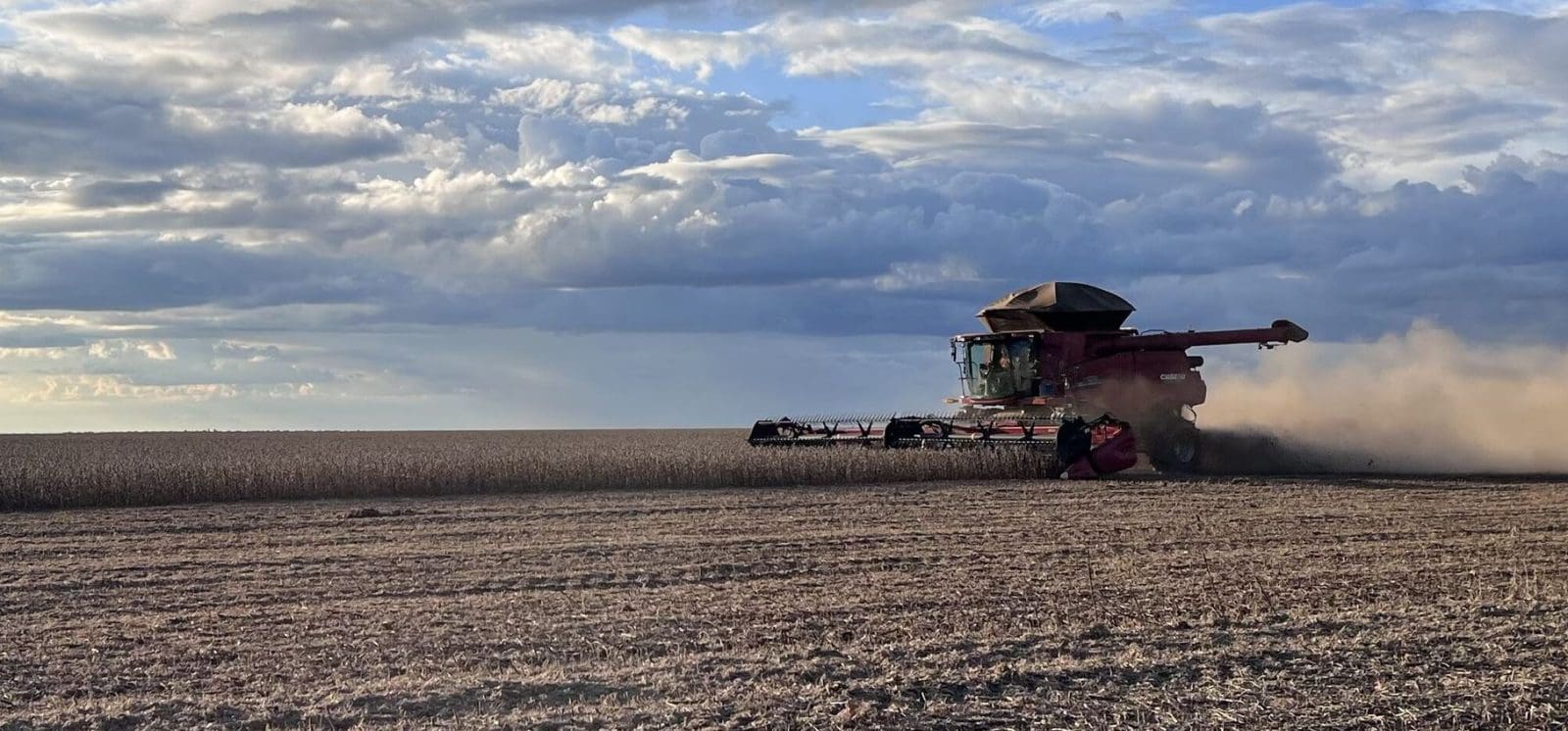
Harvesting soybeans in Brazil. Photo: Scheffer
WHILE widespread rains may still be posing a problem for this year’s soybean harvest in Brazil, considerable progress has been made throughout February, almost catching up to the long-term average and allowing the critical safrinha corn planting program to advance accordingly.
Soybean harvest approaches average
Agricultural consultancy Pátria Agronegócios noted last week that 27.2 percent of Brazil’s 2024-25 soybean harvest had been completed by February 14, an advance of 10.5pc on the previous week. This is slightly behind the progress at the same time last year, when 30.7pc had been harvested, and almost on par with the five-year average of 28.5pc. A rapidly maturing crop and generally favourable weather over the past ten days have seen the harvest progress continue to improve across most of the country.
The past month has been very fruitful for the farmers in Mato Grosso, with the harvest advancing by 58.4 percentage points. The state accounts for more than a quarter of national soybean production, and after a very slow start, the harvest has advanced from 7.8pc completed on January 24 to 66.2pc at the end of last week, according to data published over the weekend by the Mato Grosso Institute for Agricultural Economics (IMEA). This is on par with the average of the past five years of 65.6pc but behind progress at the same time last year of 76.4pc. The state’s yields and grain quality harvest-to-date are also reported to be excellent.
Brazil’s second-biggest soybean producing state is Paraná, and the harvest was reported to be 38pc completed by February 14, with the western regions the most advanced. The later planted soybeans in the state’s west have reportedly been most affected by hot and dry growing season weather conditions. Due to widespread moisture deficiencies experienced in December and January, harvested yields and quality are reported to be quite variable.
With the national harvest pace increasing and crop yields meeting expectations, confidence is growing around this season’s record production estimates, especially on the back of the eighteenth consecutive year of increased soybean plantings. Crop consultant Michael Cordonnier pegged the crop at 171 million tonnes (Mt) in an update he published last week, unchanged from a week earlier, with a neutral bias moving forward.
The most recent update from the local agribusiness consultancy Agroconsult put the crop at 171.3Mt, down from its January estimate of 172.4Mt, following an extensive nationwide crop tour in which they reportedly visited about half of the country’s soybean fields. While this is down month-on-month, it is still 15.8Mt above last year’s harvest. Problems in Rio Grande do Sul and Mato Grosso do Sul, where farmers “abandoned” some areas and losses are “irreversible” in some places, have been offset by good yields in other states, the consultancy reported.
Harvest projections from Brazil’s official agriculture agency, the National Supply Company (CONAB), released on February 13, indicated a slight downward adjustment in the soybean crop, from 166.3Mt to 166Mt. Although this appears to be a minimal variation, this revision resulted from some major regional adjustments. Production losses across Rio Grande do Sul and Mato Grosso do Sul due to drought amounted to more than 3.1Mt. However, these were almost entirely offset by increases in other states, primarily Paraná, Sao Paulo and Minas Gerais.
Corn-planting pace positive
As the pace of the soybean harvest increases, so too does that of the safrinha corn planting campaign. According to AgRural, as of February 14, 36pc of the second corn crop was in the ground, up from 20pc a week earlier, but still well behind the 59pc planted at the same time last year. Favourable weather over the past 10 days will likely see a significant jump in the planted area when this week’s update is released.
The most progress was seen in Mato Grosso, the biggest safrinha corn-producing state, where planting had jumped to 67.2pc completed at the end of last week, up from 45pc a week earlier, according to IMEA. This is only four percentage points behind the five-year average of 70.3pc, but still appreciably behind the seeding pace at the same time last year of 80.4pc.
The ideal planting window for Brazil’s safrinha corn crop is generally considered to close around February 21, with later plantings running the risk of moisture deficit at maturity. Farmers aim to capitalise on the wet season rainfall by getting the crop through pollination before the rains dry up, generally around May 5 each year. Crops then rely on subsoil moisture to fill the kernels. The latest safrinha planting date is considered to be mid-March, beyond which significant yield losses are almost guaranteed unless the autumn rains run later than normal.
With the pace of this season’s safrinha corn planting improving considerably on the back of an accelerated soybean harvest, Dr Cordonnier’s total 2024-25 Brazilian corn production estimate remained unchanged in last week’s update at 123Mt, although his future bias is neutral to lower. This is well down on the national record of 137Mt set in 2023.
CONAB increased its corn production forecast on February 13, with Bahia the only state suffering a significant reduction, 0.4Mt lower month-on-month. That loss was more than compensated by upward revisions in the southern states of Paraná, Santa Catarina and Rio Grande do Sul, where collective output rose 2.3Mt. With an increase of 0.6Mt in Mato Grosso to 46.6Mt, the national crop was increased from 119.6Mt to 122Mt.
Despite the ideal planting window closing last week, it is still far too early in the season to start reducing production estimates based on planting delays. Sowing to the end of this month is still considered good, and with the favourable weather conditions and an increased seeding pace, plenty of fieldwork should be completed this week. However, any setback in the Brazilian corn crop outlook will undoubtedly support corn prices and global feed grain values.

HAVE YOUR SAY